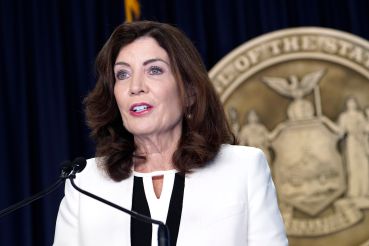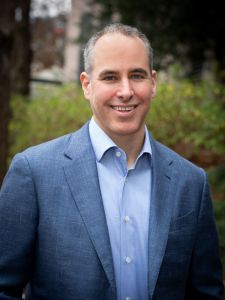Lenders Make the Case for Going Green
For multifamily property owners who haven’t already done so, now is a great time to go green
By Alison Jacobs July 26, 2017 4:49 pm
reprints
Fannie Mae (FNMA), Freddie Mac (FMCC) and the Federal Housing Administration want to make it easier for owners of multifamily properties to make green improvements. The Government-Sponsored Enterprises (GSEs) are providing property owners with economic incentives to make water- and energy-saving renovations.
Multifamily property owners have taken notice.
Interest in GSE green lending programs has increased dramatically since their inception a few years ago. Fannie Mae’s green business alone increased by more than 1,000 percent in 2016.
So far this year, over 60 percent of PGIM Real Estate Finance’s total agency originations have been through green programs, up from just a handful of deals in 2016.
Going green is no longer a hip trend but rather a mainstream imperative. Beyond being socially important, going green makes good business sense. Studies show that green properties are more valuable and benefit year-over-year from cost savings. This improved credit quality is a positive for lenders, property owners and residents alike.
While all multifamily properties stand to benefit from going green, there is currently an attractive opportunity for multifamily owners to use the GSE green lending programs to finance energy and water improvements at older multifamily properties that haven’t already undergone green updates.
Importantly, these owners must apply for financing before making green updates to take full advantage of the pricing discounts.
A Variety of Financial Benefits
Green lending programs are rapidly growing in popularity because they benefit multifamily property owners and residents. Residents benefit in the form of lower utility bills. In return, property owners enjoy higher occupancy rates, greater resident retention and potentially higher rental rates than non-green properties. These owners can also benefit economically from lower loan coupons and higher loan proceeds.
The size of a GSE loan is often constrained by a property’s ability to support debt service payments. To support higher loan proceeds, a property’s net cash flow must increase or the associated loan’s interest rate must decrease.
Under the GSE green programs, lenders can underwrite higher property net cash flow by factoring in a portion of the anticipated energy or water cost savings. Additionally, while pricing discounts vary, owners of older multifamily properties can qualify for a 5 to 35 basis point reduction in interest rate by going green. Combined, these changes can result in higher loan proceeds at a lower cost.
For example, PGIM Real Estate Finance recently helped a multifamily property built in 1972 secure a green loan with more favorable terms than a conventional loan.
In exchange for a commitment to make water efficiency improvements, the sponsor secured $619,000 of additional proceeds—an almost eight percent increase—and a 0.22 percent reduction in interest rate, which translates into cumulative debt service savings of $135,000 over 10 years.
Multiple Programs, Similar Goals
Each of the GSEs offers green lending programs. While program requirements differ, one commonality is that they all strive to help multifamily property owners lower utility costs, improve housing quality and affordability for residents and decrease the property’s environmental footprint.
Fannie Mae and Freddie Mac each have multiple programs targeting owners of existing multifamily housing stock who are ready to make green improvements. By committing to reduce energy or water usage, borrowers may increase their loan proceeds through a lower loan coupon and partial underwritten credit for projected cost savings. These agencies also have programs that offer green pricing discounts for affordable housing.
Projects that qualify under the FHA’s Green Program achieve a mortgage insurance premium of 25 basis points, which can be up to 45 basis points lower than a project that does not qualify. For a $10 million loan with a 35-year term, this translates into cumulative cost savings of up to $875,000.
To qualify for any of these programs, properties must undergo an analysis that highlights how borrowers can save energy or water by making property improvements. The GSEs will partially or fully reimburse borrowers for the cost of this analysis once a loan is closed and delivered.
While these programs are geared toward existing properties, the GSEs also offer limited pricing discounts for new construction and properties that already meet certain green standards and have obtained approved green building certifications.
The Future Is Green
Going green is here to stay, and that’s a good thing for the environment, multifamily property lenders, borrowers and residents. The GSEs’ green lending programs offer attractive financial incentives—for multifamily property owners who haven’t already done so, now is a great time to go green.
Alison Jacobs serves as a director of research and thought leadership for PGIM Real Estate Finance. She is responsible for developing, designing, and conducting original research on trends and investment opportunities in the commercial real estate markets. She can be reached via phone at 415-291-5011 and email at alison.jacobs@pgim.com. To learn more about GSE green lending programs as well as other financing options, visit pgimref.com


